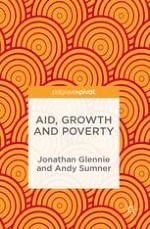2016 | OriginalPaper | Buchkapitel
3. Assessing Aid: Conceptual and Methodological Issues
verfasst von : Jonathan Glennie, Andy Sumner
Erschienen in: Aid, Growth and Poverty
Verlag: Palgrave Macmillan UK
Aktivieren Sie unsere intelligente Suche, um passende Fachinhalte oder Patente zu finden.
Wählen Sie Textabschnitte aus um mit Künstlicher Intelligenz passenden Patente zu finden. powered by
Markieren Sie Textabschnitte, um KI-gestützt weitere passende Inhalte zu finden. powered by
